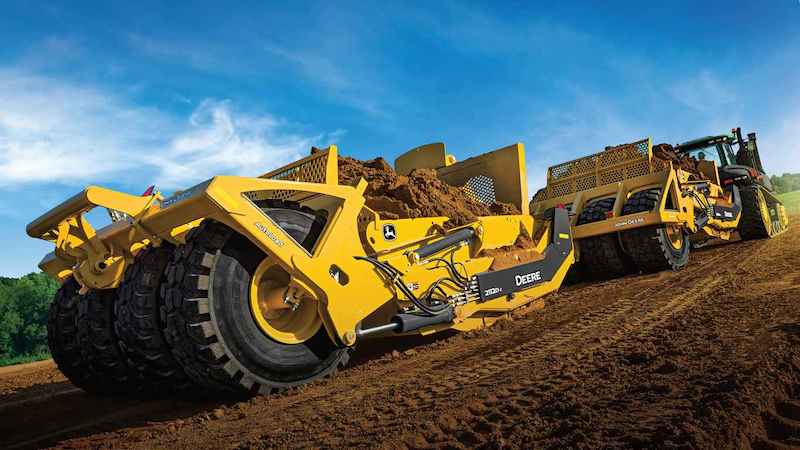Building Bridges: Revolutionizing Construction with Machinery Movers

Construction sites are like bustling playgrounds of progress, where skilled workers and heavy machinery come together to shape our environment. From towering skyscrapers to intricately designed bridges, these monumental projects are made possible by the collaborative efforts of engineers, architects, and construction equipment operators. However, amidst this grand symphony of construction, an unsung hero often goes unnoticed - the machinery movers. These innovative and powerful machines play a vital role in revolutionizing the way we build our infrastructure, ensuring that every step in the construction process is carefully executed with precision and efficiency. In this article, we delve into the world of construction equipment and machinery movers, exploring their significance and the ways in which they are reshaping the construction industry. So, fasten your hard hat and get ready to witness the fascinating interplay between man and machine as we uncover the incredible capabilities of these mechanical marvels.
Benefits of Construction Equipment
Construction equipment plays a crucial role in revolutionizing the construction industry. With the help of advanced machinery movers, construction projects are being completed more efficiently and effectively. Here are three key benefits of using construction equipment:
Increased Productivity: Construction equipment significantly boosts productivity on construction sites. By utilizing machinery movers, heavy materials can be transported quickly and safely, minimizing delays and maximizing productivity. Additionally, specialized equipment allows for tasks to be completed faster, saving valuable time and resources.
Enhanced Safety: Safety is a top priority in the construction industry, and construction equipment helps to create a safer working environment. Machinery movers are designed with safety features, such as stabilizers and remote control operation, reducing the risk of accidents and injuries. These machines also reduce the need for manual labor in hazardous situations, minimizing the exposure of workers to potential dangers.
Cost Efficiency: Investing in construction equipment and machinery movers can lead to long-term cost savings. While the initial investment may be significant, the efficiency and productivity gains outweigh the expenses. By reducing labor requirements and completing tasks more efficiently, construction equipment helps to lower overall project costs and increase profitability.
In summary, the benefits of utilizing construction equipment and machinery movers in the construction industry are increased productivity, enhanced safety, and cost efficiency. These advantages demonstrate how machinery movers are transforming the way construction projects are executed.
Types of Machinery Movers
Machinery movers play a crucial role in revolutionizing construction by facilitating the movement of heavy equipment and machinery. These specialized movers come in various types, each with unique capabilities tailored to specific needs. Let's explore the different types of machinery movers and their applications in the construction industry.

Forklifts: Forklifts are versatile and commonly used machinery movers. They are equipped with forks that can lift and transport heavy loads, making them ideal for moving equipment within construction sites. Forklifts are available in different sizes and capacities, allowing them to handle a wide range of machinery, from small tools to large construction vehicles.
Cranes: Cranes are heavy-duty machinery movers that are indispensable in construction projects. They are utilized for lifting and relocating massive objects, such as steel beams, concrete slabs, and even entire prefabricated buildings. Cranes can be stationary or mobile, depending on the requirements of the job site, and are operated by experienced professionals to ensure safety and precise positioning.
Hydraulic Dollies: Hydraulic dollies are specialized machinery movers designed for moving extremely heavy and bulky equipment. These dollies employ hydraulic power to lift and transport the machinery, enabling smooth and controlled movement. Hydraulic dollies are commonly used for relocating large machinery, such as generators, transformers, and industrial boilers.
Each type of machinery mover brings unique capabilities to construction sites, enabling efficient and safe transportation of heavy equipment. By utilizing these movers, construction companies can enhance productivity, reduce labor costs, and complete projects more efficiently.
As we delve further into the topic of construction equipment and machinery movers, we will explore their benefits and how they are transforming the construction industry in our next section. Stay tuned for "Benefits of Machinery Movers in Construction."
Impacts on Construction Industry
Machinery movers have revolutionized the construction industry, bringing about significant impacts and benefits. These movers have transformed the way construction equipment is handled and transported, leading to increased efficiency and productivity.
Firstly, the introduction of machinery movers has greatly streamlined the construction process. With their advanced technology and capabilities, these movers are able to safely and efficiently transport heavy equipment, such as cranes or bulldozers, from one site to another. This eliminates the need for manual labor-intensive processes, saving time and reducing the risk of accidents or damages.
Secondly, machinery movers have enabled construction companies to take on more complex projects. With the ability to easily maneuver and position heavy machinery, builders can now undertake projects that were previously considered difficult or impossible. This opens up new opportunities for innovation and growth in the industry.
Lastly, the use of machinery movers has significantly reduced downtime during construction projects. By minimizing construction equipment transportation spent on equipment setup and transportation, builders can focus more on actual construction activities. This leads to improved project timelines and ultimately, greater customer satisfaction.
Overall, the introduction of machinery movers has had a profound impact on the construction industry. These movers have enhanced productivity, enabled the undertaking of more complex projects, and reduced downtime. With such advancements, construction companies can continue to revolutionize the way they build and construct, ultimately benefiting both the industry and society as a whole.
